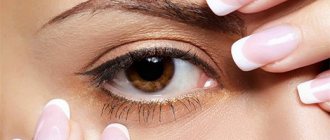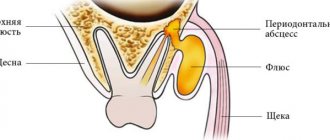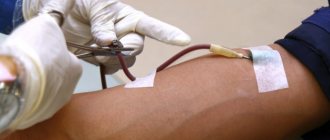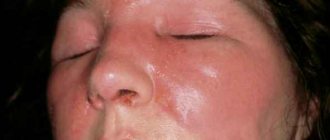A chalazion is a tumor-like neoplasm on the edges of the eyelids that occurs due to blockage of one of the ducts of the meibomian glands. Unlike typical stye (rapidly maturing and disappearing without a trace after resolution) stye, cold stye on the eye is a long-term, sluggish chronic disease.
The inflammatory neoplasm forms slowly – more than two weeks; it can remain unchanged for 6 months or more, after which it either becomes large in size or goes away.
It is necessary to treat (or remove) cold barley at the earliest stage, since if there is a delay, there is a chance that a person will acquire a secondary infection. Which will inevitably lead to sad consequences: infection with massive spread of pathogenic microorganisms through the blood, as well as the formation of a large cyst on the eyelid, which will put pressure on the eyeball, thereby significantly worsening vision function.
If a swelling, a dense subcutaneous nodule (ball) appears along the edge of the eyelid (lower, upper, both), the eye area swells, itching is felt, you need to urgently visit an ophthalmologist. Any neoplasm on the eye is dangerous.
Any formation on the eye is dangerous because it can lead to vision impairment. It is important to visit a specialist on time.
What is a boil and what does it look like?
Boils appear where hair grows. The eyelid is not the only place where a painful boil forms. A boil that has popped up between the eyebrows or a boil above the eye is also a common occurrence.
An abscess located mainly in the eyelid area is called stye. It occurs on the upper and lower eyelids with equal frequency. These boils, including boils under the eyebrow, are external boils when the hair follicle and sebaceous gland are affected.
If an abscess appears on the inside of the eyelid, bacteria enter the glands that moisturize the eyeball. The affected area is clearly visible when the doctor everts and pulls the eyelid during examination.
A cone-shaped, reddened swelling with a white-yellow dot in the middle is often confused with a pimple. However, unlike a pimple, inflammation with a boil nests deep in the skin. Through the thinned skin in the center of the abscess, only the head of the boil is visible. The necrotic core is hidden deeper.
If the boil is picked or squeezed, the infection will spread further and affect the tissue of the eyeball, which will lead to deterioration of vision.
Causes of cold barley
The following factors contribute to the formation of chalazion: decreased immune defense, hypothermia, neglect of personal hygiene. In addition, other common reasons cause the formation of cold barley:
- frequent acute respiratory infections, otitis, sinusitis, other infectious diseases;
- use of unsuitable contact lenses, prolonged wear;
- hormonal imbalance, diabetes;
- increased secretion of sebaceous secretion by the eye glands;
- consequences of typical stye, blepharitis, and other eye diseases;
- violation of protein, lipid, carbohydrate metabolism;
- lack of minerals, vitamins;
- diseases of the blood, gastrointestinal tract, liver, as well as pathologies associated with insufficiency of lymph and blood circulation;
- skin diseases in the facial area;
- fungal infections of the eyes - Demodex folliculorum;
- stress;
- allergy;
- excess (or poor quality) of cosmetics.
The main limiting factors for the occurrence of cold barley are a healthy lifestyle, timely correct treatment of infectious diseases (from a doctor, not according to folk recipes), as well as compliance with proper hygiene requirements, both at home and at work.
Why does it appear
The brow ridges and eyes are the most vulnerable part of the face. A boil on the eyelid is formed when pathogenic microflora, along with dirt, penetrates the hair follicle and the adjacent sebaceous gland. The conditions for the development and growth of pathogenic bacteria are the most suitable there. Staphylococcus multiplies quickly, and the inflammatory process begins. Pus and necrotic masses accumulate in the follicle and gland. The inflamed tissue swells and turns red.
The habit of touching and rubbing your eyes with your hands is one of the most common causes of boils. Other factors:
- Abuse of decorative cosmetics and other products, from mascara, eye shadow to creams, scrubs and lotions for washing, especially low-quality products. They dry out the delicate skin of the eyelids, which cracks, and the inflammatory agent penetrates through microtraumas.
- Cosmetic procedures, for example, plucking and shaving eyebrows, also injure the skin, and the wounds become infected.
- Allergic reactions not only to cosmetics or food, but also to pollen, dust, mold.
- Prolonged and constant contact with dust, chemicals, coupled with neglect of protective equipment, such as a mask or goggles.
- Colds and other diseases (endocrine, autoimmune) that weaken the immune system, unable to fight the causative agent of the disease.
- Taking certain medications.
- Poor diet, bad habits, for example, smoking, alcohol abuse, sweet, fatty foods, flour foods.
- Eye infections, such as conjunctivitis.
- Injuries in the eye area.
Symptoms
With cold barley there will be no acute inflammation; the process is chronic and proliferative. Chalazion grows slowly - over several months. In the early stages, it is accompanied by the appearance of swelling at the edge of the eyelid, slight redness on the side of the conjunctiva and mild pain on palpation. But the inflammatory phenomena do not last long. Then the tissues become denser and the eyelid becomes deformed. The skin over the “bump” is not changed and is easily displaced.
A tumor-like formation is usually not accompanied by subjective symptoms, but it brings a lot of aesthetic discomfort, especially to girls and women. Sometimes a secondary bacterial infection occurs with the development of typical barley. Then all signs of inflammation (redness, swelling and soreness) will be fully present.
The clinical picture of chalazona is very characteristic. This is a painless lump on the edge of the eyelid, which for many becomes a cosmetic problem.
Stages of boil development
A boil under the eye develops gradually:
- At the initial stage, the area around the hair follicle turns red. Fluid with blood fragments accumulates in the tissues. Minor swelling appears. This stage is called infiltration.
- The affected area swells more. The person feels itching and tingling. If a boil forms in the eyelid area, profuse lacrimation begins. Thick discharge is noticeable on the eyelashes and in the corners of the eyes. The stage of suppuration begins.
- The inflamed area rises, and a white dot is clearly visible in the center of the painful cone-shaped formation under the thinned skin.
- The boil matures and bursts. The pus comes out, and the necrotic core is rejected. After the abscess breaks through, a fairly deep wound remains, which heals if the process proceeded without complications.
The stages progress differently depending on your overall health. A person often feels general malaise, chills, and pain in the affected area. After the boil has broken through, the swelling subsides and body temperature returns to normal. Next comes the healing stage.
Prevention
To prevent inflammation, you need to follow some rules:
- Maintain personal hygiene yourself and teach your children to do it. Do not touch your eyes with dirty hands, use a personal towel and cosmetics, a handkerchief.
- Stick to proper nutrition. Include foods containing vitamin A in your diet, such as cottage cheese, liver, butter, carrots. As well as foods containing vitamin C, such as citrus fruits, black currants, rose hips, but do not forget about allergies.
- Engage in health-improving physical education and hardening.
What is the danger
If the boil on the eye becomes complicated, the infection spreads to healthy tissues and organs of hearing and smell. A person develops diseases such as otitis media and sinusitis. Pathogenic flora affects the lymph nodes. In the most severe cases, sepsis and inflammation of the membranes of the brain begin.
An untreated boil of the eye threatens a person with deterioration or even loss of vision. Self-medication and attempts to open or squeeze out a boil on your own lead to disastrous results.
The formation of several boils on one eye is also dangerous. This significantly increases the risk of infection spreading to other organs and parts of the face, for example, to the eyeball, because the affected area occupies a large area.
How to check
Above we looked at which smartphones support Android Auto in terms of OS requirements. This raises the question of how to check whether the program can connect to a smartphone. The following options are available here:
Now you know which phones support Android Auto, and what you need to connect the application. In order not to waste time in the future, it is advisable to immediately clarify the requirements for the program using the links indicated above, and then make a decision about installation and connection to the head unit. As a last resort, you can use the AAMirror program, but that's another story.
How to distinguish a boil from other inflammatory processes
A boil on the eyelid does not look like a regular pimple. Inflammation affects a large area. The inflamed area swells, the tissue around it swells greatly.
This pathology is often accompanied by severe pain, not only in the affected area. The head hurts, the person experiences thirst, nausea. The temperature rises, nearby lymph nodes enlarge, which are also very painful to the touch.
The formation, which is called stye, depending on the stage of development, can be compacted, reddened, and protrude above the surface of the skin. In the center of a painful, dense and hot area, surrounded by a bright red area, the head of the boil is clearly visible.
A sharp deterioration in general condition does not accompany the appearance of ordinary acne.
Surgical removal
Surgical intervention to remove the cyst is prescribed only for the most advanced form of the disease. Basically, the pathology can be dealt with using a conservative method of treatment by taking medications or warming up during physiotherapy.
The main indications for surgery may be:
- the impossibility of treatment with conservative methods due to the individual characteristics of the body;
- large cysts that impair vision function and significantly spoil a person’s appearance;
- suspicion of a tumor of the eyelid.
Important! The main contraindications to surgery are severe inflammation of the tissue around the tumor, as well as recent infectious diseases. Cyst removal is mainly carried out from the inside of the eyelid.
Main stages of the procedure
- Pain relief is performed by injecting an anesthetic under the skin.
- The cyst area is clamped with special tweezers.
- The tumor is removed along with the capsule.
- Cauterize the wound with iodine solution.
- Sutures are placed on the eyelid and the operated eye is secured with a bandage to prevent the formation of a hematoma.
How to cure a boil in the eye
Treatment for chiryak on the eye begins at the first signs of the disease. It is better to see a doctor who will prescribe a general blood test. Staphylococci can be resistant to antibiotics, therefore, if a boil is treated with medications, an analysis of the contents of the boil is performed. The result reveals the pathogen and the sensitivity of pathogenic microflora to medications.
In some cases, surgical intervention is required:
- drug therapy or exposure to the affected skin near the eye with local preparations (ointments) does not produce results;
- the boil occupies a large area and threatens a serious complication (for example, blurred vision);
- the patient's condition deteriorates sharply.
Treatment is prescribed by a dermatologist. Visits to traditional healers and the use of alternative remedies are dangerous. Self-medication will not give results and will lead to complications, especially if the boils arise constantly and affect a wide area. Then an integrated approach is required, which consists not only of treating abscesses, but also of fully examining the patient.
Medicines from the pharmacy
Drug therapy is one of the methods to treat a chiryak on the eye. Eye drops, gels, ointments for the treatment of chirium on the eye are purchased according to a doctor’s prescription.
Drug therapy for boils is carried out at home, strictly following the dosage prescribed by the doctor. Use:
- Dicloxacillin, Erythromycin, Tetracycline are long-acting antibiotics that are included in eye ointments that effectively fight staphylococcal infections.
- Eye drops Albucid, Tobramycin, Ciprofloxacin are prescribed if a boil develops next to the conjunctival sac.
- Sterile bandages soaked in a solution of silver nitrate are applied to the eye area.
- The sore spot is injected with novocaine. The procedure relieves a person from painful sensations.
How to treat a boil on the eye at home
Treatment at home is carried out under medical supervision. Before squeezing out a boil on the eyelid or a boil on the eyebrows, applying compresses, or using folk remedies, the patient should consult a dermatologist.
Other folk remedies in the fight against barley
In the fight for visual health, various folk remedies can be useful, namely:
- Boil water and dissolve 1 tablespoon of baking soda in 200 ml of liquid, mix well so that there are no lumps or soda “sand” left. As soon as you feel itching of the sore eye, apply lotions, 2-3 times a day is enough.
- Using a garlic press, get fresh garlic juice and periodically lubricate the affected eyelid with it. This recipe is only suitable for those with insensitive, thick skin.
- Traditional healers also recommend trying to rub the eye with gold jewelry that the patient wears on his body.
- Dissolve the brewer's yeast to a liquid consistency; it must be fresh. Before the treatment procedure, the yeast should be slightly warmed to a comfortable temperature. It is recommended to drink the healing potion three times a day; this remedy is especially helpful for chronic inflammation of the eyelids.
- Based on the theory of different impact points on the skin, bandage the middle and ring fingers with red wool yarn, forming the number 8. The disease that appears on the left eye requires bandaging the left hand, and the right eye, accordingly, requires bandaging the fingers of the right hand.
- In order for the barley to stop bothering you and quickly disappear, you need to eat 1 tansy flower every 2 hours during the day. Do not confuse the inflorescence with flowers! You need to drink tansy with a couple of sips of water; you should not chew it - the therapeutic effect will not be affected, but the taste of the plant is unpleasantly bitter.
- If you still have castor oil in your medicine cabinet, soak 2-3 layers of gauze in the oil solution and place it on your eye overnight. For better contact and to prevent the compress from slipping, it is advisable to cover the bandage with compressor paper and additionally bandage it. According to reviews from those who have tried this folk recipe, after 2 manipulations the swelling should noticeably decrease or disappear altogether.
Features of treating a boil on a child’s eye
A boil under a child’s eye often appears if the baby actively rubs his eyes with his hands. Children crawl, pick up toys from the floor, pick flowers, fall, cry, and at the same time actively rub the skin of their eyelids with dirty fists, smearing dirt and tears. It is not surprising that the skin becomes inflamed and boils appear on the eyelids.
Most often, the doctor prescribes eye drops or ointments, prescribes painkillers, and a vitamin complex to maintain the body.
A chiryak on a child’s eye is accompanied by:
- pain, headache, throat, ears may hurt;
- fever and chills;
- nausea, loss of appetite;
- deterioration of general condition.
With such symptoms, adults seek help from a doctor without delay. Treatment begins as early as possible. After examining the patient, the dermatologist decides how to treat the boil on the child’s eye. Trying to eliminate a boil using home methods is prohibited!
Treatment of barley with herbs
If you often suffer from barley, the following herbal decoction may help you. You will need the following herbs. Calamus root, birch buds, wild rosemary herb, string, violet herb. All this must be taken in proportions 2-2-4-4-3. Mix well, after grinding in a coffee grinder. Then pour in liters of boiling water. A liter for two tablespoons of mixed herbs. As soon as you fill it with water, put it on the fire and let it simmer for about ten minutes. Then stand for 12 hours and strain.
Drink half a glass of the decoction half an hour before meals. I can also advise you to add a little honey for taste. It is also possible not only to take the decoction internally, but also to make small compresses on the eyes.
What to do is strictly prohibited
A boil on the eyelid should never be squeezed out or removed by yourself. The proximity of the infectious focus to the brain, organs of hearing and smell poses a serious risk to the patient’s health. The contents of chiria can get on the membranes of the eyeball, penetrate into the ear canal, and nasal sinuses, which will contribute to the spread of the inflammatory process. If pathogenic microflora enters the bloodstream or lymphatic ducts, sepsis or lymphadenitis may occur.
A boil on the eye is removed in a hospital. The operation is performed by a surgeon.
Popular pharmacy products
Syntomycin ointment helps well with initial barley.
Apply the product to the reddened eyelid. Usually there is no trace of barley left. The good thing about this method is that it does not cause relapses. Glycerin will help stop the formation of an infectious process if you apply the product as soon as the eyelid begins to itch
A drop of the product is instilled into the conjunctival sac, the eye is closed and gently massaged. Helps well with internal stye
Castor oil is a remedy for many diseases, not only gastrointestinal problems. A cotton pad is moistened with oil and applied to the diseased eyelid. The procedure is carried out before bedtime, the compress is kept until the morning. You need to secure the disc with a bandage so that it remains on the eyelid. The method does not cause any discomfort; redness goes away after the second application of the compress.
Zelenka and alcohol tincture of calendula are a quick means of stopping the infectious process. To do this, first moisten a cotton swab in calendula tincture and gently cauterize the reddened area, and then repeat the same procedure with brilliant green. Treatment is carried out once in the morning, a second time in the evening. The inflammation goes away.
Preventive measures
It is best to prevent the formation of boils. Simple precautions must be followed:
- Wash your hands thoroughly and do not rub or touch your eyes.
- Lead a healthy lifestyle.
- Wash your face and eyes with running water without using soap.
- Wear safety glasses or a mask if conditions require.
- Do not use other people's hygiene products or cosmetics.
- Monitor your eye health and condition.
- Be in the fresh air.
- Work in optimal lighting.
- Make sure your eyes don't dry out.
The rules for preventing pustular diseases are simple, but they allow you to avoid conditions that threaten your health. Adults should monitor children and teach them to take care of their eye health.
What are the dangers of lack of treatment?
With prolonged absence of treatment or the use of alternative medicine, symptoms may worsen and the patient’s condition may worsen.
Internal barley definitely requires medical supervision. It is a bacterial disease that can cause the development of the following pathologies:
- chalazion;
- phlegmon of the orbit;
- thrombus in the cavernous sinus of the brain;
- meningitis.
These pathologies can cause irreversible changes in vision and can also lead to death. Therefore, traditional medicine should not be ignored in this situation.
Furuncle in the throat
Furunculosis also does not develop in the throat. The most common reason why an abscess appears in the throat is purulent sore throat. In this case, an abscess forms in the tonsil area.
Photo 40 - Purulent sore throat
The following symptoms may accompany its appearance:
- temperature rise to 38 degrees and above;
- a sore throat;
- difficulty swallowing;
- headache;
- whitish or yellowish coating on the tongue.
A purulent abscess in the throat requires immediate treatment at the hospital. An otolaryngologist will examine the mucous membranes, carry out the necessary diagnostic procedures and draw a conclusion regarding the preferred methods of further treatment of the disease.
Photo 41 - Purulent abscess in the throat
However, sore throat is not the only reason for the formation of ulcers in the throat. A similar picture can be observed with tonsillitis and pharyngomycosis, the causative agent of which is fungi of the genus Candida.
Photo 42 - Tonsillitis
Photo 43 - Pharyngomycosis
Photo 44 – Candida mushrooms
An abscess can appear after trauma to the mucous membrane, when eating rough food. Treatment is prescribed only after the cause of the disease has been established.
Photo 45 - Abscess after mucosal injury
Most often, antibiotics are used, in the form of tablets or capsules, as well as antiseptic anti-inflammatory solutions for gargling and mouthwash.











